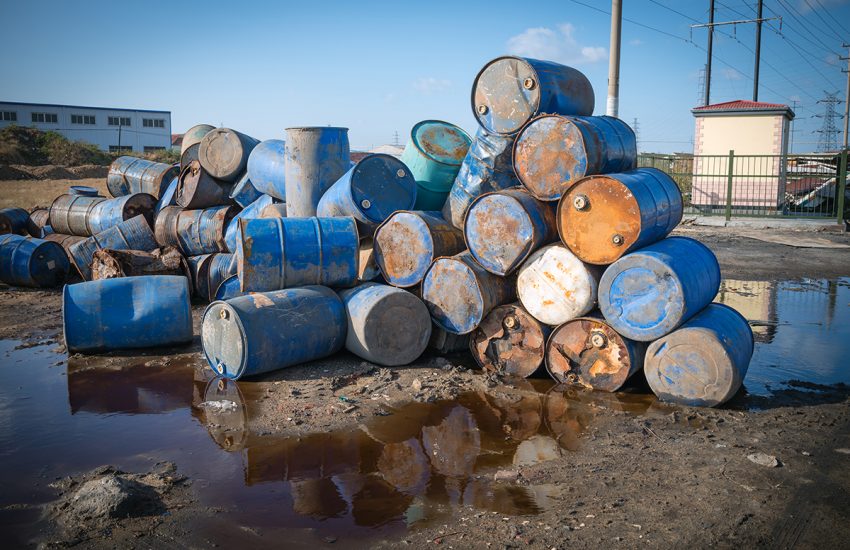We wanted to take some time to wish all of our subscribers and their families a happy holiday season and all the best in the new year. 2020 has been a busy, active year in the world of environmental law and we appreciate you dropping by our site on a regular basis for emerging issues and up-to-date information. Environmental Law Monitor will return next week with new posts. Once again, happy holidays!…
Continue ReadingLATEST INSIGHTS
Annual Judicial Hellholes Report Demonstrates Continuing Impact on Environmental and Toxic Tort Litigation
The recently released American Tort Reform Foundation 2020-21 Judicial Hellholes Report highlights nine U.S. jurisdictions where expansive civil litigation continued notwithstanding the COVID-19 pandemic and is expected to flourish. In most of these jurisdictions, mass toxic tort and environmental litigation has been prevalent.
Topping this year’s list is the Philadelphia Court of Common Pleas and the Supreme Court of Pennsylvania, followed by New York City and California. South Carolina, Louisiana, and Georgia round out the fourth, fifth, and sixth positions. St. Louis, Missouri, perennial problem …
Continue Reading
NRD Alert: New Study Links 6PPD Tire Additive Transformation Product to the Death of Coho Salmon in the Puget Sound
On December 3, 2020, a study authored by a team of researchers from the University of Washington was published in the journal Science, linking a transformation product from a common tire additive to the death of Coho salmon in the Puget Sound. Researchers had observed acute mortality in Coho salmon in the area for decades, and while the mortality had been previously linked to storm water, and then later to tires generally, the exact causal toxicant was unknown until now.
6PPD, one of several …
Continue Reading
EPA Final Rulemaking Will Not Require Additional Financial Assurance Requirements for Cleanups at Industrial Sites
On November 25, 2020, the U.S. Environmental Protection Agency (EPA) announced it finalized rulemaking on financial assurance requirements for the Electric Power Generation, Transmission and Distribution; Petroleum and Coal Products Manufacturing; and Chemical Manufacturing industries. The EPA determined the financial risks from facilities in these industries are addressed by existing state and federal regulations and modern industry practices, which mitigate risks inherent in these industries and cover the costs of cleaning up hazardous substance releases.
The final rulemaking relates to section 108(b) of the Comprehensive …
Continue Reading
NDMA―Hiding in Plain Sight
Last month, extended release (ER) Metformin―an oral diabetes medicine that helps control blood sugar levels―joined a small-but-expanding list of prescription drugs, including Valsartan (for blood pressure) and Zantac (for heartburn), that were recalled by manufacturers because it may contain amounts of N-nitrosodimethylamine (NDMA) above the acceptable intake limit.
NDMA is a semi-volatile, odorless yellow oil that can form naturally or unintentionally through industrial processes, and is also found naturally at low levels in many foods, such as roasted meats, cheese, and beer, because of cooking …
Continue Reading
U.S. EPA’s Supplemental Analysis of 1,4-Dioxane Finds No Unreasonable Consumer Risks for Six Separate Categories of Potential Exposure
On November 20, 2020, the U.S. Environmental Protection Agency (EPA) issued a supplemental analysis to the draft risk evaluation of 1,4-dioxane under the Toxic Substances Control Act. The supplemental analysis was developed in response to public and peer review comments to the draft risk evaluation, which our blog previously reported on here.
The EPA’s risk evaluation states that 1,4-dioxane is a “likely human carcinogen” that is “highly mobile” and “does not readily biodegrade in the environment.” However, the draft risk evaluation notes “(n)o unreasonable …
Continue Reading
Happy Thanksgiving!
We wanted to take a moment and wish all of our subscribers and their families a very Happy Thanksgiving. Environmental Law Monitor will return next Thursday (12/3) with new posts. Once again, Happy Thanksgiving!…
Continue Reading
Illinois Supreme Court Rejects Class Action Against Chicago Over “Increased Danger” from Lead Water Lines
Illinois’ highest state court in Gordon Berry, et al, v. The City of Chicago has rejected a proposed class action that threatened to overwhelm Chicago with claims over elevated lead contamination risk from its old lead water lines. On September 24, 2020, the Illinois Supreme Court overturned the ruling of a state appeals court, ruling a Circuit Court of Cook County judge was correct in finding Chicago homeowners needed to do more than simply claim the lead in their water was dangerous in order to …
Continue Reading
EPA Releases Compliance Advisory for UV Devices Designed to Kill Germs, Bacteria, and Viruses
In the midst of the COVID-19 pandemic and the resultant shortage of traditional household disinfectant products such as wipes and sprays, numerous ultraviolet (UV) devices have been marketed to consumers with claims that they kill germs, bacteria, and viruses. What some may not know is that UV lights that are sold or distributed with these claims are subject to various federal regulation, including the Federal Insecticide, Fungicide, and Rodenticide Act (FIRA), which governs the registration, distribution, sale, and use of pesticides in the United States. …
Continue Reading
Following Ninth Circuit’s Ban, EPA Approves Use of Dicamba Herbicide Until 2025
Over the last few years, the Environmental Law Monitor has monitored regulatory and litigation matters on dicamba herbicide used by farmers to combat broadleaf weeds that have developed resistance to other herbicides (see prior posts here.)
In June 2020, the U.S. Court of Appeals for the Ninth Circuit ordered a ban on certain dicamba products, which vacated the U.S. Environmental Protection Agency’s (EPA) prior approval and required it to conduct a new review. However, in late October, the EPA renewed its approval …
Continue Reading